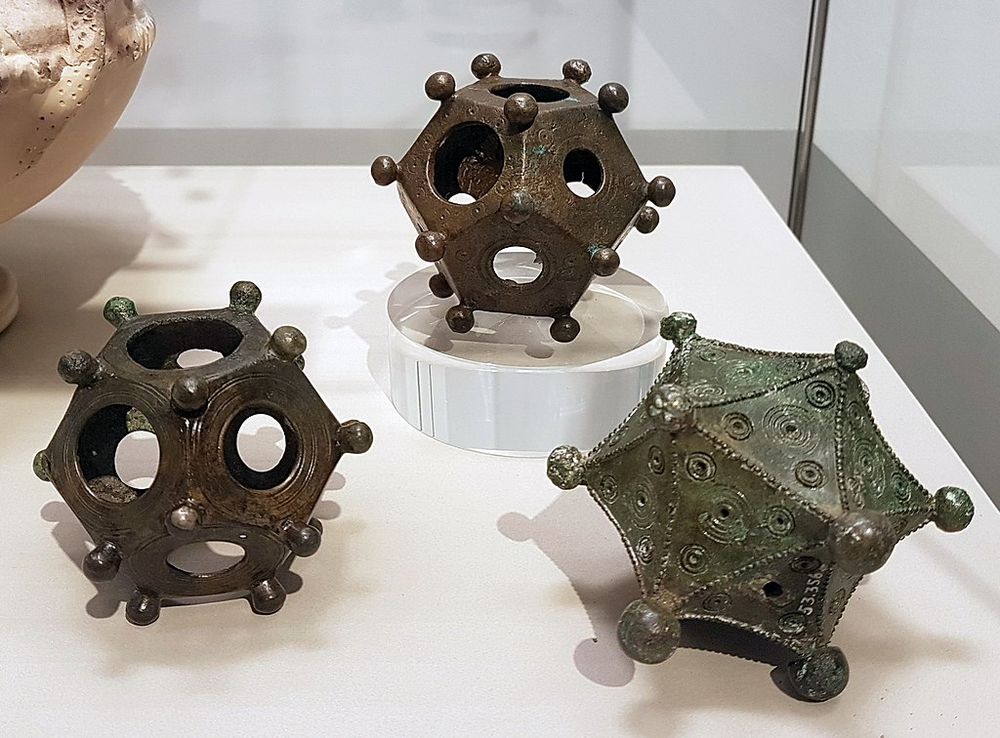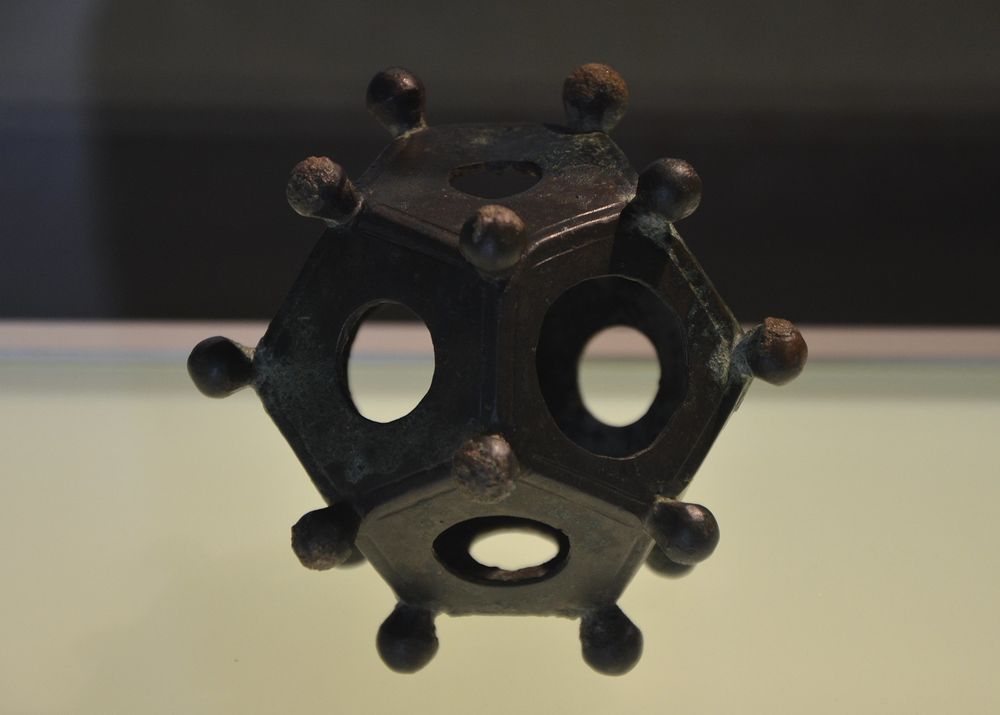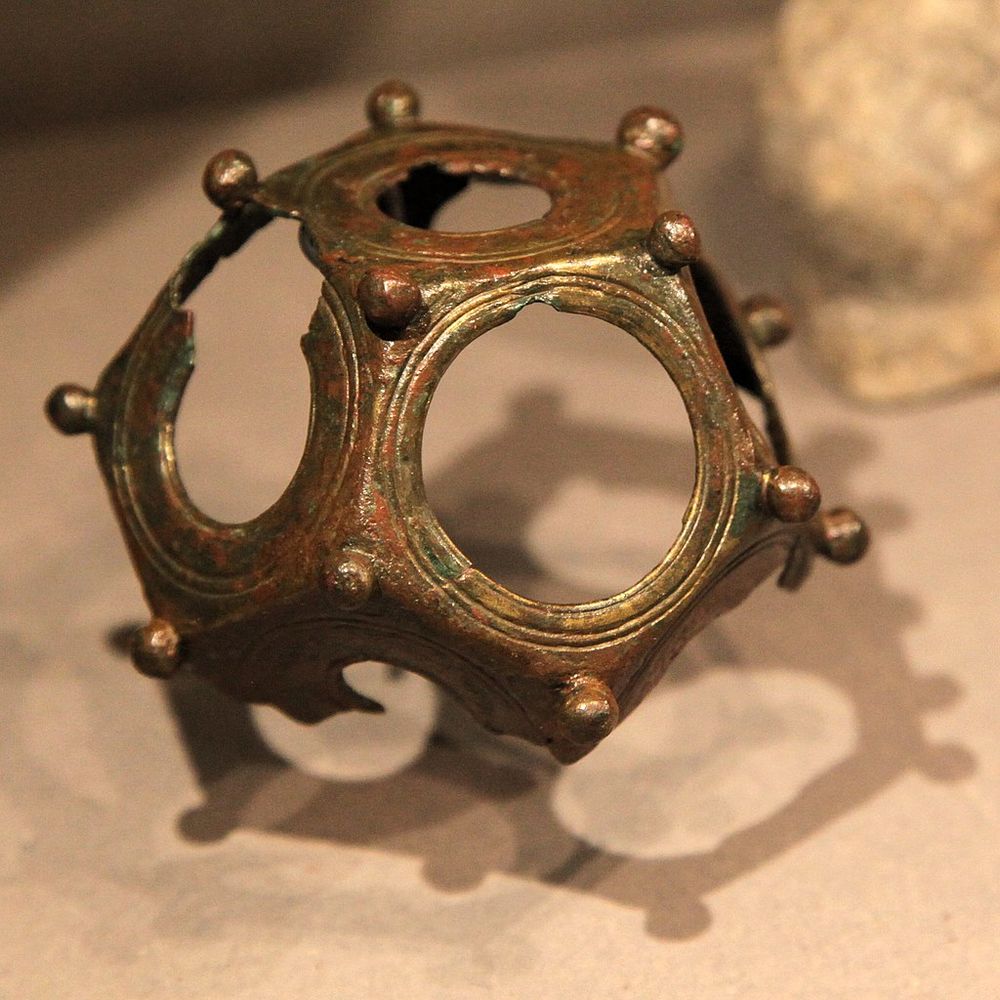One such object is the Roman dodecahedron.
The hollow object is a bronze enigma with a decahedral shape of twelve flat pentagonal faces.
Its presence in central Europe reveals nothing of its purpose.

But there are a few hypotheses that have been floated since its first discovery more than 300 years ago.
The strange discovery had all antiquarians in a fix, but there was yet more coming their way.
Each subsequently discovered object was different in size and built.

Most dodecahedron vary between four and 11 centimeters in size and 35 and 580 grams in weight.
Each of the five vertices has a globular knob.
Tinier than a tennis ball, the object seems more like an interesting dice.

The northernmost discovery was made at Hadrians Wall in Northern Britain.
The southernmost was at Arles in France.
A single sample made of silver was found in Geneva.
Interestingly, no dodecahedron exists in eastern Roman empire as far as we know.
Those found in the western region date back to the second, third and fourth century AD.
The randomness of their locations as well as the lack of written context has perplexed historians further.
Photo:Carole Raddato/Flickr
In 1987 a man named Brian Campbell discovered a dodecahedron in his yard.
Others were dug up in Roman military camps, temples and public baths.
Some turned up in theatres and tombs, some among heaps of discarded coins.
Many historians found these objects in antique stores as well, which made it difficult to trace their origin.
Only two dodecahedra have been found in controlled scientific excavations.
A dated assumption is that the object was a weapon akin to a mace.
More recently, historians are calling it a measuring gadget.
The argument is explained by imagining a soldier looking at an object a few meters away through the dodecahedron.
The dodecahedra mostly pop up in the Gallo-Roman lands where the Roman civilization overlaid the Celtic civilization.
In that context, the 12 pentagonal sides can have cosmic relevance.
Dutch researcher Sjra Wagemans compared it to the icosahedrona 20-faced convex polyhedronwhich served a similar purpose.
Remnants of wax have been found stuck to various dodecahedra.
Could this allude to their use as candlestick holders?
Probably not, because the remnants could be the remains of their maker moulds.
But our dodecahedra have remained elusive in most regions of the ancient empire.
Other esoteric groups and lobbyists have suggested creative uses for the object from crocheting to decoration.
But none of these hold much fortitude in their arguments.
Could it be a toy?
It does seem to fit in the popular French cup-and-ball game, the so-called Bilboquet.
The final assumption remains that the object was sacred and important to religious practice.
References#A Roman Dodecahedron For Measuring Distance#Mental Floss#The Enigma Of The Dodecahedron